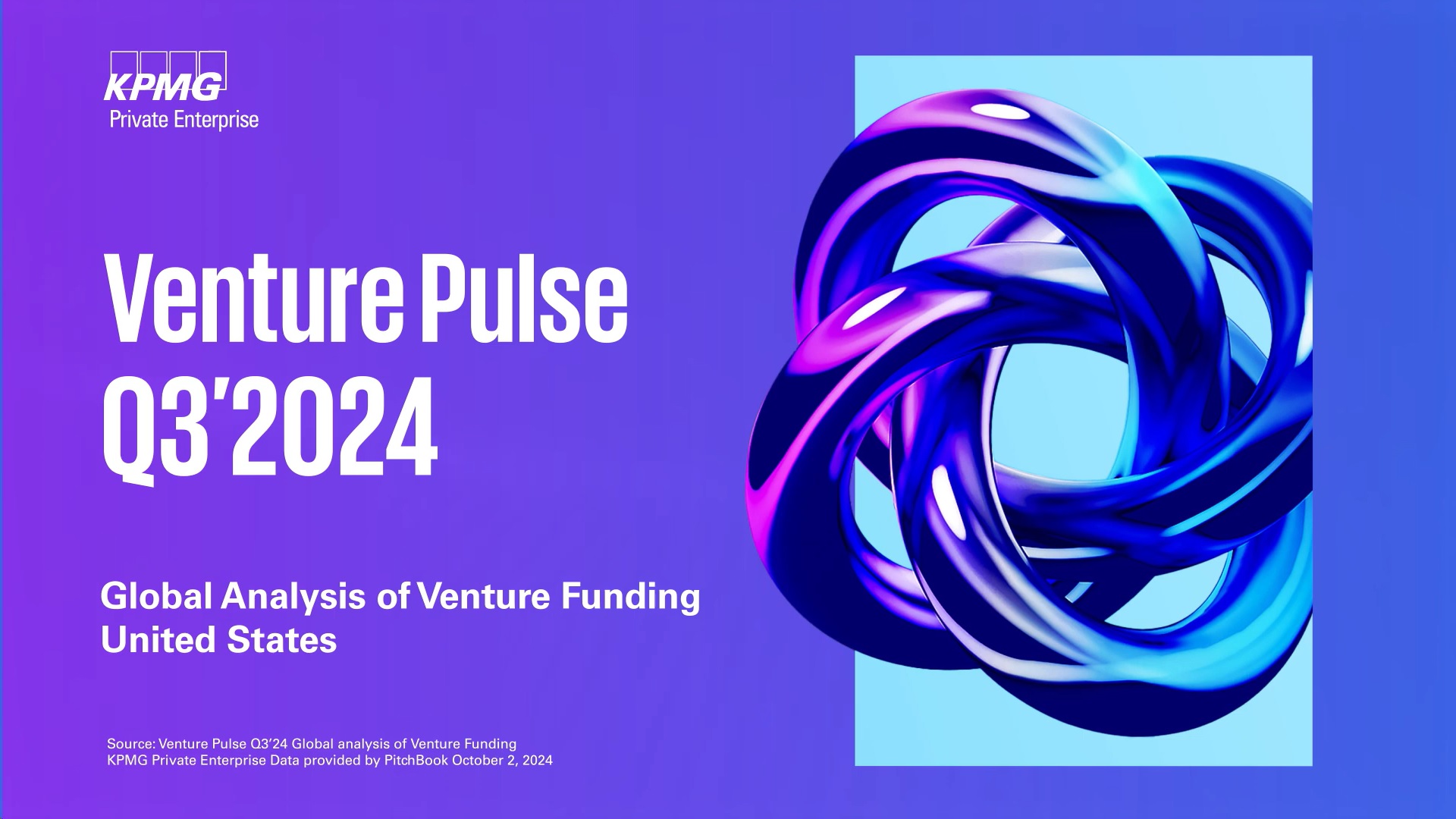Venture Pulse Q3 2024
The Venture Pulse report provides insights around trends, opportunities, and challenges in the U.S. venture capital market.

Venture Capital (VC) investment in the US fell in Q3’24, driven in part by an expected seasonal slowdown in VC deals activity. Given the approaching presidential election, some US VC investors have also pulled back from making major investment decisions until the outcome of the election is known and the potential policy directions of the next president are better understood.
Investor interest in AI remains red hot
Despite continued uncertainty in the market, AI continued to see incredibly strong VC investment in the US during Q3’24, led by a $1.5 billion raise by AI-powered defense solutions company Anduril Industries and a $1 billion raise by core AI-focused startup Safe Superintelligence. A wide range of other AI-focused startups also raised $100 million+ funding rounds during the quarter, including Gen AI-focused chip developer Groq ($640 million), immersive technologies company Infinite Reality ($350 million), data infrastructure company Cribl ($319 million), AI-focused surgical solutions company Caresyntax ($310 million), and airline retail platform Flyr ($295 million).
I have some cautious optimism that 2025 could be a better year for the global IPO markets. After a very dry couple of years, IPO activity could finally see a resurgence. While we probably won’t see a lot of core AI companies going out yet—in part because many are still working to figure out the optimal business models, and are quite well funded—we could see companies in a wide range of other sectors looking to exit—including health and biotech, fintech, and energy and cleantech.
Conor Moore
Global Head, KPMG Private Enterprise
Due diligence continues to be a priority for VC investors in the US
Given the uncertain economic environment and the sustained lack of exit activity, VC investors continued to prioritize deal due diligence during Q3’24, taking a deeper look into areas like pathways to profitability, EBITA targets, growth expectations, and other indicators, prior to making major investment decisions. A number of VC investors also showed an increasing inclination to hold back from making funding decisions in order to see what other VC investors a startup could bring to the table. This has contributed to more collaborative investments as some investors have shied away from taking the lead.
IPO activity remains dry with a few exceptions — like biotech
IPO activity in the US remained quiet in Q3’24, with the exception of biotech — which saw some robust IPO activity late in the quarter, including companies like immunology focused Zenas Biopharma, oncology-focused Bicara Therapeutics, and precision peptide therapy company MBX Biosciences. Outside of the biotech space, IPO activity was very slow — a trend expected to continue through the upcoming presidential election in mid Q4’24. A backlog of companies ready to exit could see IPO activity begin to pick up following the election and into Q1’25, with additional companies preparing for exits later in 2025.
Seed and angel stage investments decline as VC investors back away from riskier bets
At the end of Q3’24, seed and angel stage funding levels in the US were both well behind the pace needed to match even 2023’s soft results. Given the slow exit environment, many VC investors in the US have become cautious with their early-stage investments, prioritizing investments in lower risk startups with proven value propositions and well-defined paths to profitability, and in companies within their own portfolios well-positioned to exit once the IPO door swings open.
Interest rate cuts could spur M&A activity
During Q3’24, the US Federal Reserve cut its key interest rate by half a point. While this cut has not yet had a chance to have a major impact on VC investment levels or on IPO exit activity as of yet — in part due to the number of investors holding back in advance of the election — it could add fuel to the growing sense of optimism leading into 2025. Over the next quarter, however, the interest rate cut could catalyze M&A activity as buyers reconsider acquisitions that did not make economic sense six months ago in light of the lower cost of capital. Additional rate cuts could spur M&A activity even further.
Trends to watch for in Q4’24
With the upcoming election, VC investment is not expected to change dramatically in Q4’24, although optimism is growing for a potential rebound early in 2025 as uncertainties dissipate and macroeconomic conditions improve.
Given the quiet IPO activity over the past two years, many eyes will be on IPO market in Q4’24 and into 2025 with the hope of a significant reopening of activity. While it might take time for IPOs to materialize, there could be an increase in the number of companies announcing their intent to go public over the next few quarters.
At a sector level, both AI and defense-tech are expected to remain very hot areas for VC investment in Q4’24. Health and biotech will likely also remain very attractive to investors.
We’re seeing investors taking a much deeper dive into what a company’s path to profitability looks like. They’re not accepting speculation as much as they have in the past; they want to really understand a startup’s projected market, customer base, and growth and profitability expectations. Delving into these factors as part of their due diligence processes is taking longer, which has slowed down deal speeds to some degree.
Francois Chadwick
Partner, KPMG Private Enterprise

Key insights from Venture Pulse Q3 2024
In the U.S. in Q3’24
1
2
3
4
5
Dive into our thinking:
Venture Pulse Q3 2024
Download PDFQ3’24 Venture Pulse Report – Global trends
A global overview of key findings uncovered from the Q3’24 Venture Pulse Report.
LinkedIn Live Event: AI & Defense Tech Heating Up
Hear KPMG Private Enterprise professionals discuss highlights from the latest Venture Pulse report.
About the Pulse Series

Explore more

Diving Deeper into AI: Exploring the Potential and Challenges
Views on being an AI startup in the current environment

Disruption Decoded Webcast: Perspectives from private and newly public companies
Disruption Decoded: Perspectives on Growth, AI, and Reporting from Private and Newly public Companies
Subscribe to KPMG Private insights
Subscribe to receive pertinent information that will help you drive value for your private company.
Meet our team
